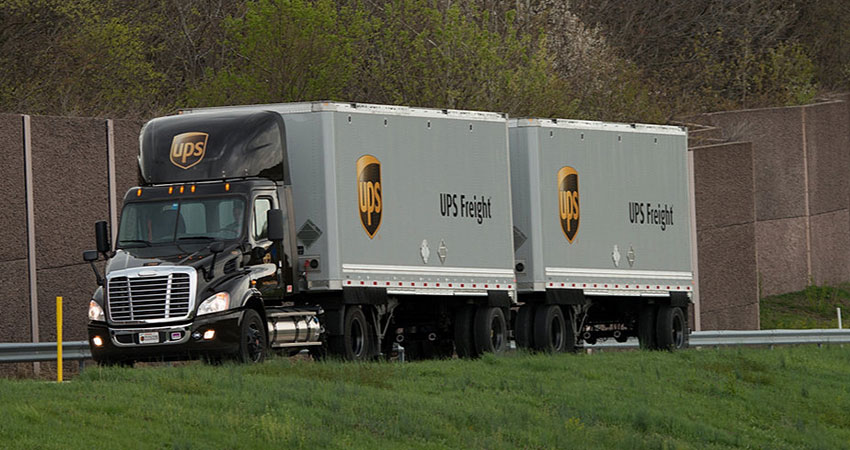UPS reported higher-than-expected first-quarter earnings, even as domestic volume declined for the second consecutive quarter, as its pricing strategy and focus on profitable business over volume continues to pay lucrative dividends during the ongoing ecommerce boom.
The company reported revenue of $24.4 billion, up 6.4% from the first quarter of 2021, and consolidated operating profit was $3.3 billion, up 17.6%. Domestic revenue was $15.1 billion, up 8% from $14 billion in the prior year, and operating profit was $1.7 billion, up 22.4% from $1.4 billion. Critically, domestic revenue per piece increased 9.5%, more than offsetting the volume decline, UPS executives said.
UPS’s earnings per share were $3.05 in Q1, beating the analyst consensus of $2.88, according to data from Refinitiv.
“We continue to pivot toward opportunity,” said UPS CEO Carol Tome in an earnings call with analysts. “We’ve made tremendous progress over the last two years. We are leveraging the power of our data to become much more agile. Under our ‘Better not Bigger’ framework, we are investing in the capabilities that matter the most to our customers and we are winning in the parts of the market that value our end-to-end network like SMBs, healthcare, B2B and large enterprise accounts. How do we know we are winning? Because we’ve gained market share.”
Tome said UPS continues its push into SMB, which represented 28.4% of U.S. volume in Q1, up from 27% a year earlier. She said the company’s Digital Access Point (DAP) program, which provides SMBs with pre-negotiated shipping discounts and value-added services like order management through software partnerships, saw 500,000 new accounts created in Q1, more than 3x the figure from a year ago. Launched in 2019, it’s available in 27 countries.
“We’re continuing to add DAP partners, putting us well on our way to achieving our $2 billion DAP revenue target in 2022,” she said. “The enhancements we are making are resonating with SMB customers. In the first quarter, the U.S. SMB average daily volume growth rate including platforms outpaced the enterprise volume growth rate.”
On the technology side, Tome said UPS plans to have RFID-based smart packaging installed at 100 facilities this year, while also implementing automated bagging and label application and robotic small sort induction to increase productivity.
UPS CFO Brian Newman said overall volume continued to be challenged in Q1, continuing a trend from the prior quarter. He said total average daily volume in the U.S. was down 3% or 611,000 packages, due to a 7.4% decline in residential volume.
“Looking back to March 2021, stimulus checks arrived at many U.S. households and contributed to difficult year-over-year comps in the first quarter of this year,” Newman said. “The decline in residential deliveries included a reduction in SurePost volume of about 312,000 packages per day.”
Newman said the decline in residential volume was partially offset by a 3.6% increase in average daily volume from B2B, with growth in both the enterprise and SMB categories. “In the first quarter, B2B represented 43% of our volume, which was up from 40% in the first quarter of 2021,” he said.

